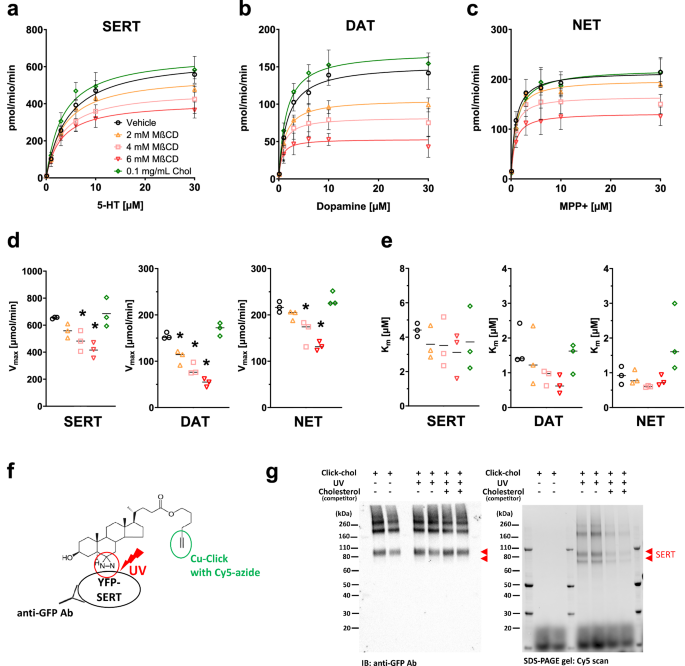Cholesterol Shapes How the Brain’s Neurotransmitter Transporter for Serotonin Works
Published in Neuroscience and General & Internal Medicine
Our brains rely on chemical messengers called neurotransmitters—such as serotonin, dopamine, and norepinephrine—to send signals between nerve cells. These molecules are released into the tiny gap between neurons, called the synaptic cleft, where they bind to receptors and trigger responses. To keep communication precise, specialized proteins called monoamine transporters (MATs) act like molecular vacuum cleaners: they remove neurotransmitters from the synaptic cleft and return them to the neuron, ensuring signals are clear and balanced.
But MATs don’t work neither alone nor on their own. They are embedded in the cell membrane, a flexible barrier made of lipids, including cholesterol, which gives the membrane its structure and fluidity. Cholesterol isn’t just a passive building block—it actively influences how proteins like MATs function. Think of it as a "molecular glue" that helps proteins maintain their shape, move efficiently, and interact with their environment. Our study has now revealed that cholesterol in the cell membrane plays a crucial role in how these transporters function.
In our study, we explored how cholesterol affects the three main human MATs: the serotonin transporter (SERT), dopamine transporter (DAT), and norepinephrine transporter (NET). When we reduced cholesterol levels in cells that expressed these transporters, we observed several changes:
- Weaker neurotransmitter uptake: All three transporters became less effective at taking up neurotransmitters and showed weaker binding to ligands.
- Disrupted clustering in SERT: in particular, SERT showed disrupted oligomerization, a process where proteins cluster together, a feature thought to be important for SERT‘s regulation.
- Conformational shifts: Recordings of the electrical currents in the cells indicated that cholesterol helps SERT shift between the outward- and inward-facing conformation, a critical step for transporting serotonin.
One of the most surprising findings was how cholesterol depletion affected the transporters’ response to amphetamine, a drug that triggers neurotransmitter release. For SERT, lowering cholesterol increased serotonin release, while for DAT and NET, it had the opposite effect. This difference appears to depend on another lipid membrane component, Phosphatidylinositol 4,5-bisphosphate (PIP2), which binds to SERT and influences its behavior.
Why Does This Matter?
Cholesterol acts like a fine-tuner for MAT activity, shaping how neurotransmitters are recycled and how the brain responds to drugs. Since imbalances in serotonin, dopamine, and norepinephrine are linked to conditions like depression, addiction, and Attention-Deficit-Hyperactivity Disorder, understanding how cholesterol interacts with these transporters could open new doors for treating these disorders. By uncovering these molecular details, we move closer to developing therapies that target not just the proteins themselves, but the environment that shapes their function.
Article link:
Follow the Topic
-
Molecular Psychiatry

This journal publishes work aimed at elucidating biological mechanisms underlying psychiatric disorders and their treatment, with emphasis on studies at the interface of pre-clinical and clinical research.




Please sign in or register for FREE
If you are a registered user on Research Communities by Springer Nature, please sign in